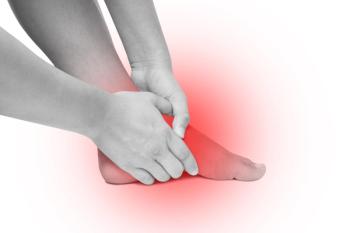
Don’t Want to Hear It: Sound Elicited Pain
For people with pain hyperacusis, everyday sounds trigger pain. The condition can lead to social isolation and worse. Treatment options are limited.
Imagine a world where the simple sounds of daily life trigger physical pain. For individuals with pain hyperacusis, also known as noxacusis, this is a distressing reality. A recent
Patients with pain hyperacusis report that everyday sounds, such as conversations or environmental noises, can trigger significant discomfort or pain. This hypersensitivity adversely affects their quality of life, leading to social withdrawal and heightened anxiety.
The exact pathophysiology remains unclear, but research suggests that abnormal central auditory processing and heightened neural gain may contribute to the condition. One hypothesis is that insults to middle ear anatomy lead to irritation of the trigeminal nerve that results in pain from what most people experience simply as sound.
There is no standardized treatment for pain hyperacusis. According to Jahn and team, healthcare professionals have limited options in terms of appropriately diagnosing and monitoring this condition. Sometimes clinicians prescribe benzodiazepines and nerve blockers off label,
Based on the results of an intervention survey designed to rate any pharmaceutical or non-pharmaceutical intervention for hyperacusis, participants who did get relief from medications reported modest-to-excellent effects (75% to 100% pain relief) from some pharmacologic treatments. Specifically, benzodiazepines (clonazepam and alprazolam, for example) and nerve blockers (lidocaine and ambroxol, for example) emerged as the most effective pharmaceutical options. But more than half of the effectiveness ratings from the study group suggested that pharmacologic treatment had no effect on their pain.
Nonpharmaceutical interventions were largely ineffective, with only a few participants reporting modest-to-excellent effects from cognitive behavioral therapy, sound therapy, TMJ-specific treatments, and chiropractic or massage therapy.
Jahn and team emphasized the need for an interdisciplinary approach to better understand and treat pain hyperacusis as well as the importance of improved education and support from healthcare professionals. The research underscored the importance of developing comprehensive management plans tailored to individual patient needs to improve their quality of life.
“Pharmaceutical and nonpharmaceutical therapies for pain hyperacusis are extremely limited," Jahn wrote in an email in to Managed Healthcare Executive.
Very few, if any, intervention studies have specifically evaluated treatment efficacy in people who experience physical pain when they hear sounds, she cotinue.
"One striking finding from this study was that almost all patients reported that healthcare professionals do not understand or empathize with their condition. They consistently told us that most physicians are unaware of pain hyperacusis, or, even worse, that healthcare professionals do not believe them when they describe their symptoms," Jahn wrote.
She said there is a critical need for improved education and awareness of pain hyperacusis and providers need to work in a interdisciplinary way to develop holistic treatment plans that take into account the mental and not social aspects of the condition, not just the pain.
Newsletter
Get the latest industry news, event updates, and more from Managed healthcare Executive.



















































